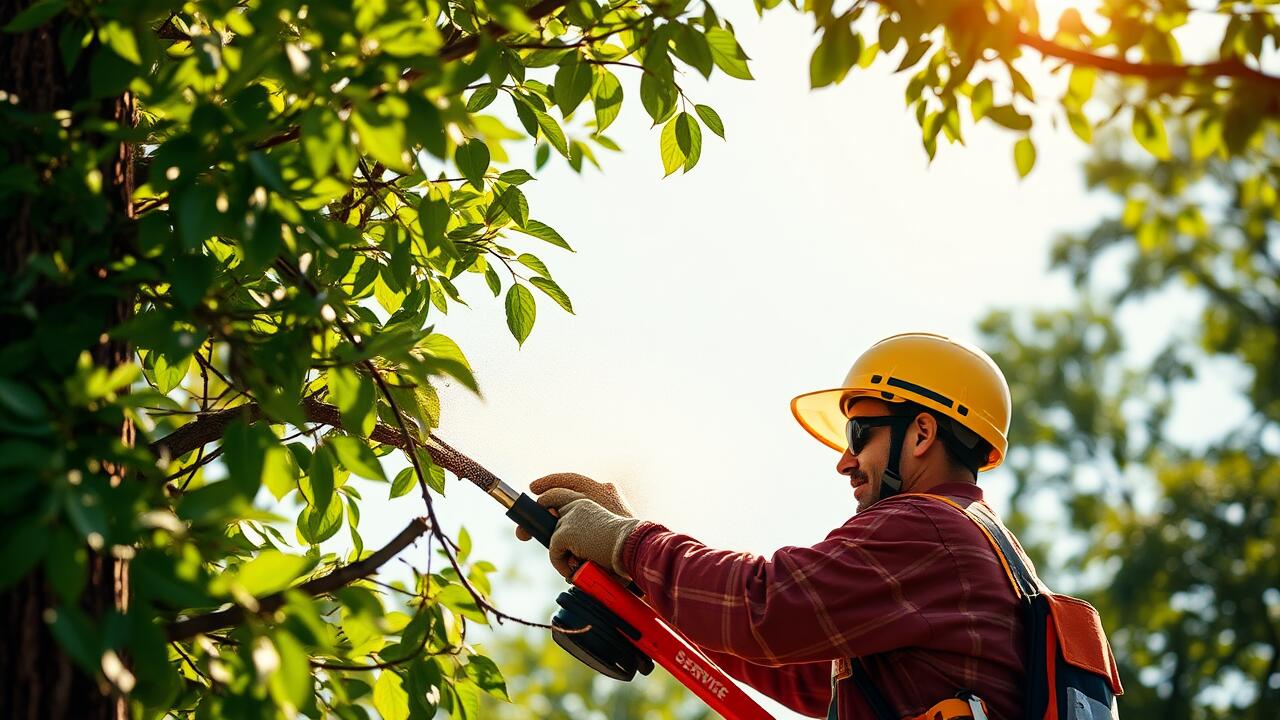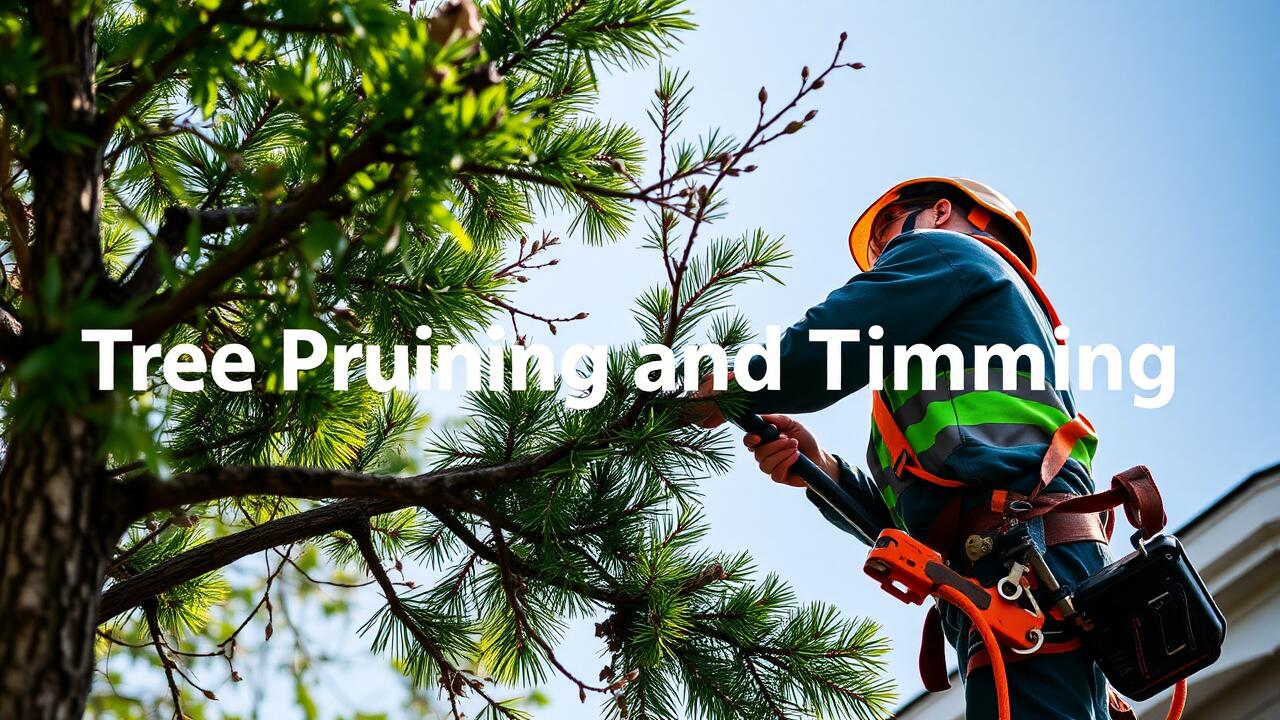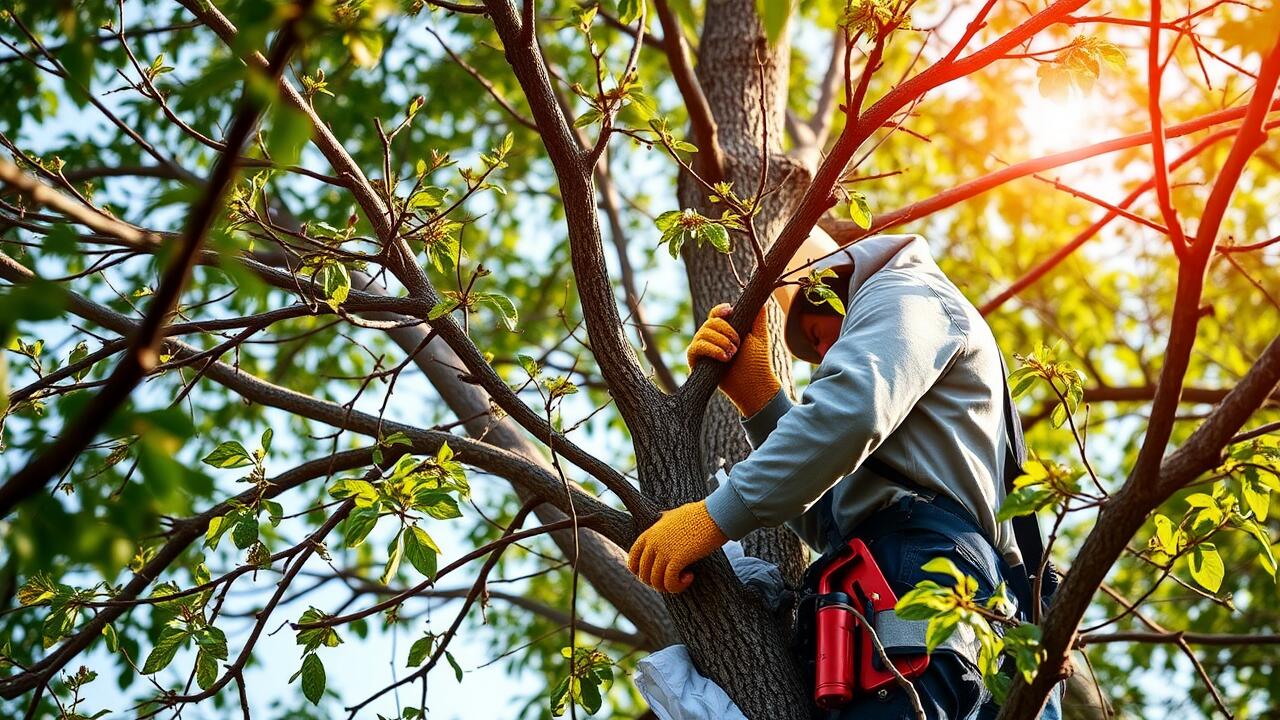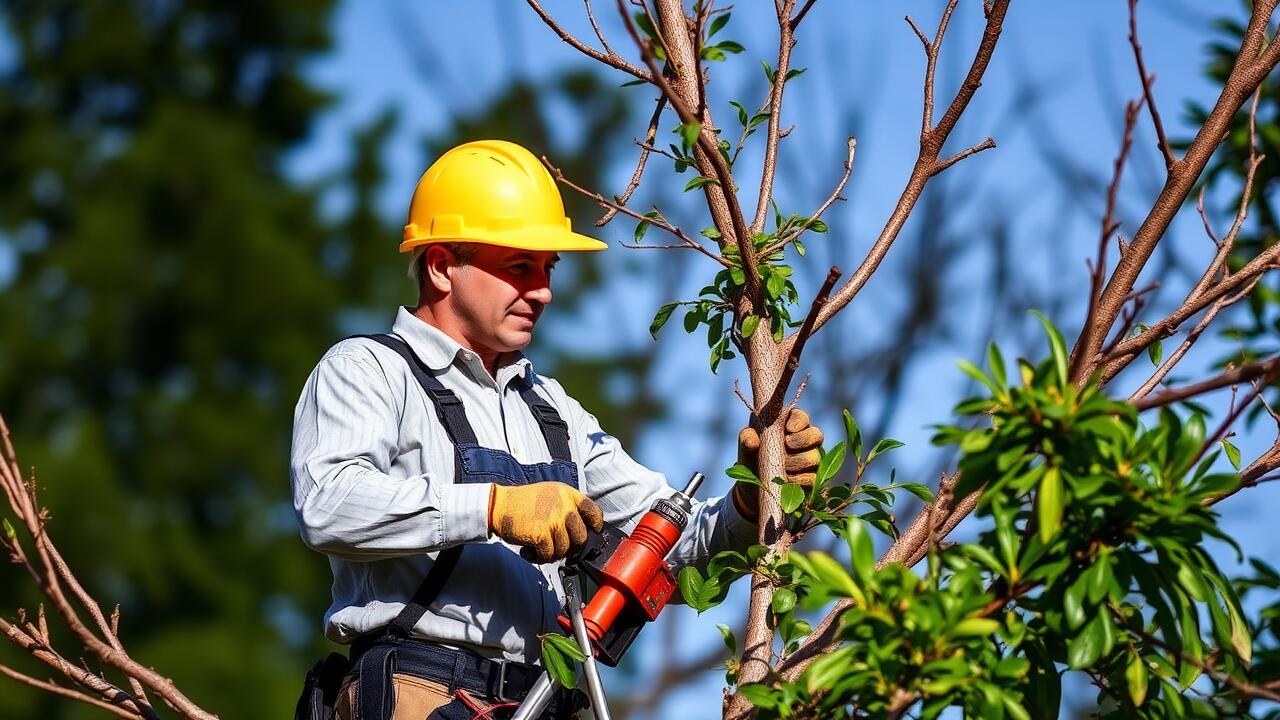
Identifying Competing Leaders
Identifying competing leaders in young trees is crucial for their long-term health and stability. Typically, a young tree should have a single dominant leader, which helps in establishing a strong trunk and appropriate structure. When multiple leaders emerge, they can compete for light and resources, ultimately leading to weak branching and structural instability. Properly identifying these leaders early on sets the foundation for more effective pruning and better overall growth.
Addressing competing leaders can prevent future issues related to branch strength and tree shape. Regular inspection is essential, especially during the tree's early growth phase. When opting for professional services like Tree Pruning and Trimming in Poncey-Highland, Atlanta, arborists can provide guidance on selecting which leader to keep while ensuring that any cuts are made correctly to encourage healthy tree development. This proactive approach makes a significant difference in the long-term vitality of the tree.
Correcting Structural Issues Early
Addressing structural issues early in a young tree's life can significantly enhance its growth potential and longevity. Young trees often exhibit multiple leaders or competing branches, which can lead to weak structures and growth patterns. Identifying these problems early allows for timely intervention. By managing the branches effectively, the tree can develop a single dominant leader, creating a strong central trunk. This approach not only ensures better stability but also promotes a healthy framework as the tree matures.
Engaging in practices such as Tree Pruning and Trimming in Atlanta can be beneficial for maintaining the desired shape and balance of young trees. Corrective pruning techniques involve removing any branches that cross or rub against each other, reducing the risk of inflicted wounds that could attract pests and diseases. This proactive maintenance fosters an optimal growing environment while allowing the tree to direct its energy toward producing healthy foliage and roots. A well-structured tree is more resilient against weather conditions and is better equipped to thrive in its surroundings.
Encouraging Healthy Growth
Young trees benefit significantly from proper pruning techniques that encourage healthy growth. One key aspect involves removing any damaged or diseased branches early on, allowing the tree to redirect its energy into healthier parts. This not only supports better overall health but also enhances the tree's vitality and resilience against environmental stresses. Regular assessments inform which branches may need to be pruned, ensuring that the tree maintains a strong structure.
Additionally, shaping the young tree as it grows fosters balanced development and reduces the risk of future structural problems. Aesthetic considerations are important, but functionality should guide pruning choices. Tree pruning and trimming in Druid Hills, Atlanta, can facilitate this process, promoting a form that will accommodate future growth patterns while maximizing sunlight exposure. Properly executed pruning allows for a thriving tree that contributes positively to its surrounding ecosystem.
Pruning for Shape and Balance
Pruning for shape and balance is essential for young trees to establish a strong foundation. Correct techniques encourage a desirable form and symmetry, allowing the tree to develop a sturdy structure as it matures. Thinning out crowded branches helps to prevent competition for light, promoting healthier growth and reducing the risk of breakage during storms. This early intervention significantly contributes to the tree's overall aesthetics and longevity.
In areas like Old Fourth Ward in Atlanta, engaging in tree pruning and trimming can preserve the beauty of the urban landscape. Proper pruning practices not only refine the shape of trees but also enhance their resilience against pests and diseases. Homeowners and landscapers alike can benefit from understanding the best times and methods for pruning, ensuring that each tree reaches its full potential while maintaining balance within the environment.
Preventing Pests and Diseases
Tree pruning is essential not only for shaping the tree but also for preventing pests and diseases. Regularly removing dead or dying branches keeps the tree healthy and reduces the likelihood of infestations. Pests are often attracted to weakened areas, making it crucial to address any structural issues as they arise. Trees that are pruned properly can better withstand stress from environmental factors and remain resistant to infections.
In Old Fourth Ward, Atlanta, effective tree management practices are vital. Local arborists recommend integrating tree pruning and trimming into routine maintenance. This proactive approach makes it easier to spot any early signs of disease or pest activity. Healthy trees are less appealing to pests, creating a more robust urban landscape. Monitoring and maintaining proper pruning habits will enhance not only tree health but also the overall beauty of the neighborhood.
How Pruning Affects Tree Health
Pruning is essential for maintaining tree health, as it influences not only the tree's structure but also its ability to absorb sunlight and nutrients. Removing dead or diseased branches encourages healthier growth and prevents the spread of pests and diseases to other areas of the tree. Proper pruning allows for better air circulation within the canopy, reducing the risk of fungal infections that thrive in humid, crowded environments. Trees that receive careful attention through pruning often show increased vigor and resilience against environmental stress.
Engaging in practices such as Tree Pruning and Trimming in Old Fourth Ward, Atlanta, can greatly enhance the overall well-being of young trees. Regularly assessing and adjusting a tree’s shape promotes even growth and aids its developmental process. By focusing on a balanced structure, trees can develop strong branches that are less prone to breakage. This proactive care not only supports the tree's longevity but also contributes to a healthier urban landscape.
FAQS
What is the best time to prune young trees?
The best time to prune young trees is during late winter or early spring before new growth begins. This allows you to see the tree's structure clearly and minimizes stress to the tree.
How do I identify competing leaders in my young tree?
Competing leaders can be identified by examining the tree's trunk for multiple upward-growing branches that are similar in size and height. Ideally, a single central leader should be encouraged for better structure.
What are some common structural issues in young trees?
Common structural issues in young trees include weak branch angles, multiple leaders, and branches that cross each other. Addressing these problems early through proper pruning can improve the tree's stability and health.
How much should I prune a young tree?
When pruning a young tree, it is recommended to remove no more than 25% of the tree's canopy in one season. Focus on removing dead, damaged, or crossing branches and shaping the tree for balance.
Can pruning help prevent pests and diseases in young trees?
Yes, proper pruning can help prevent pests and diseases by improving air circulation and sunlight exposure in the tree’s canopy, which reduces humidity levels and creates a less favorable environment for pathogens.



